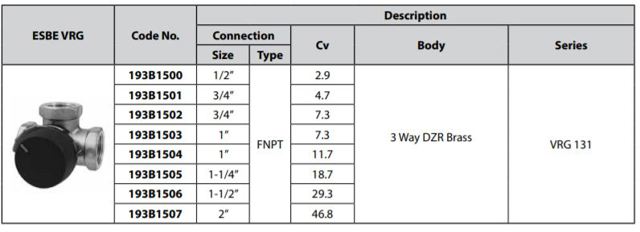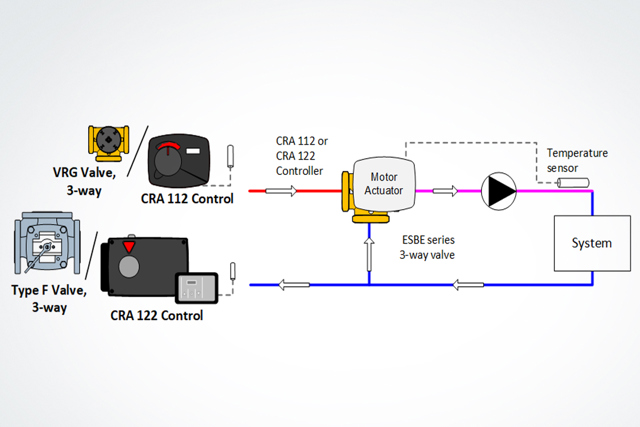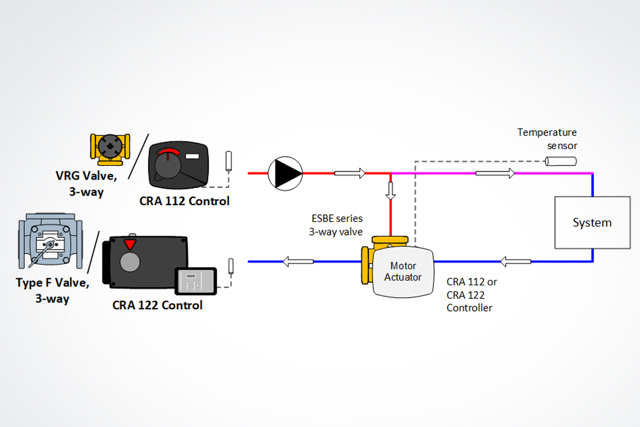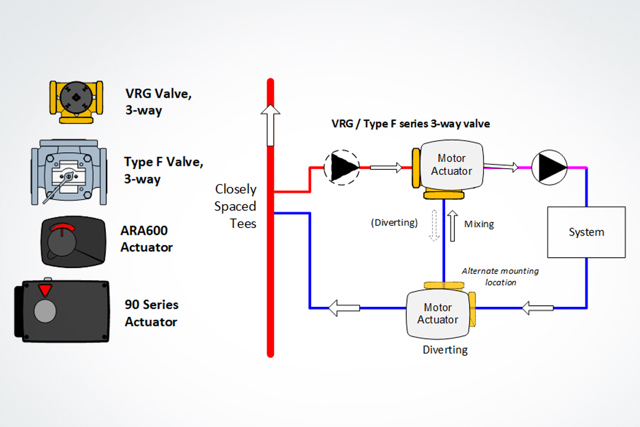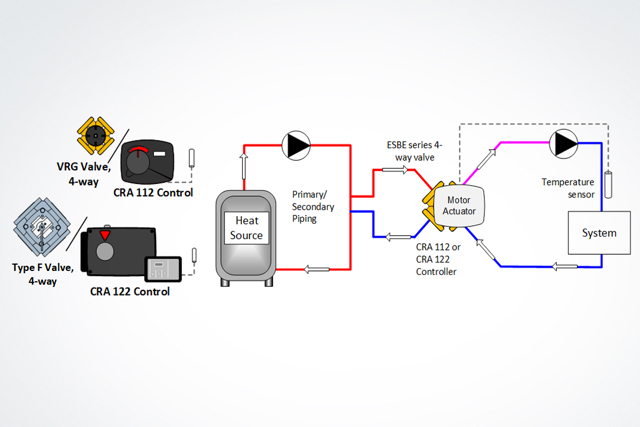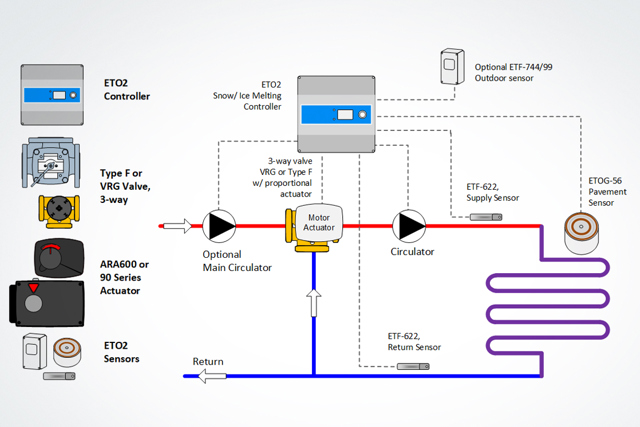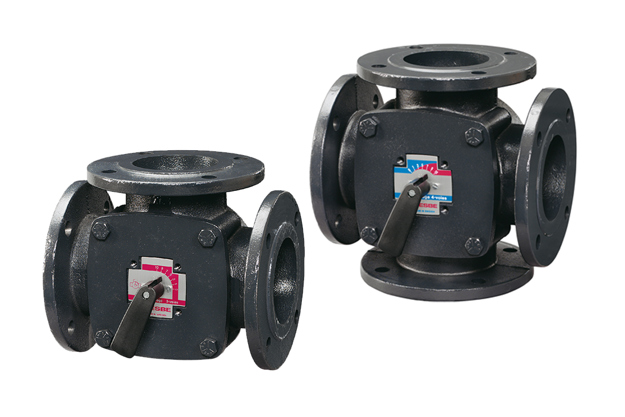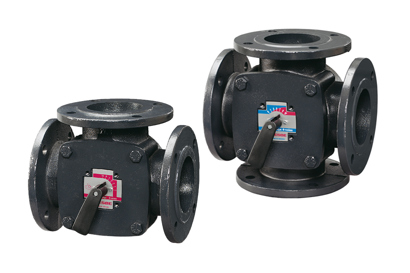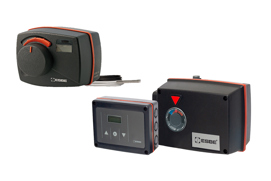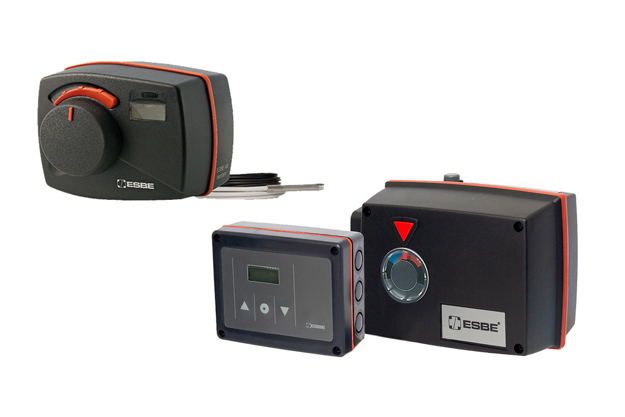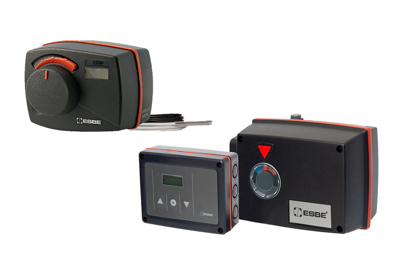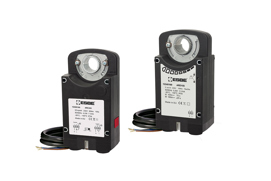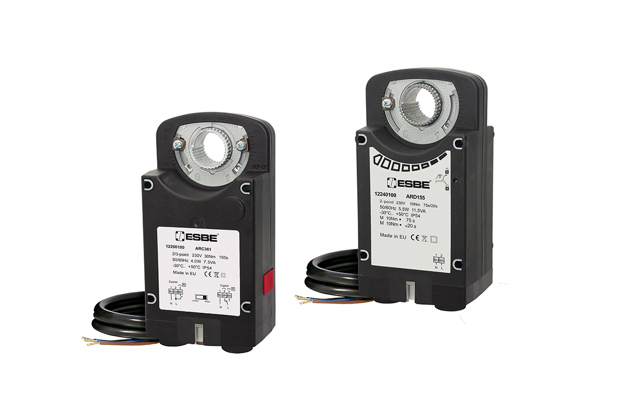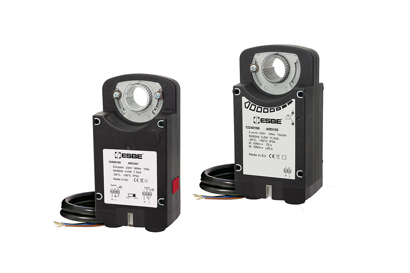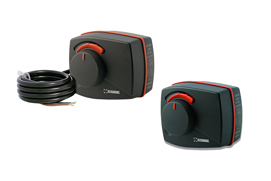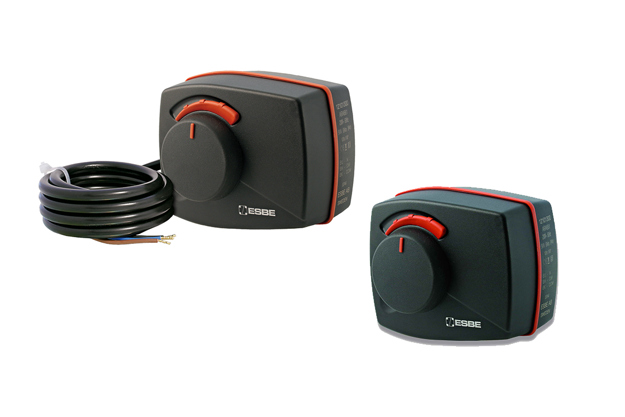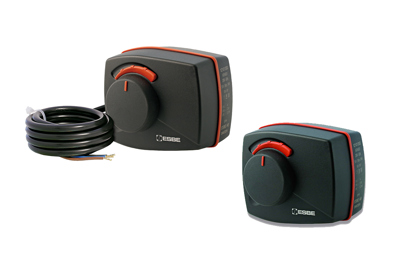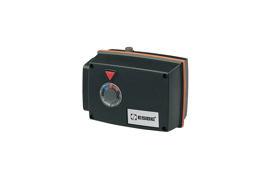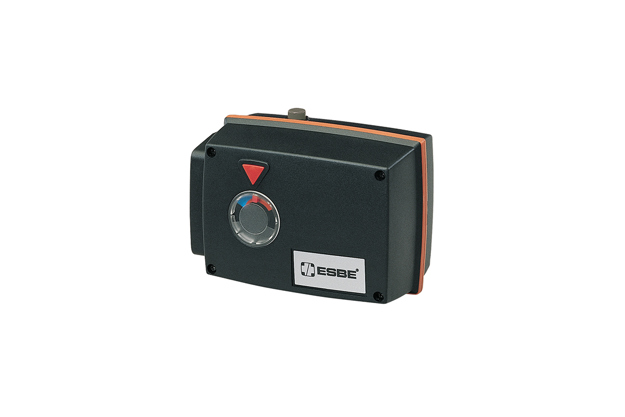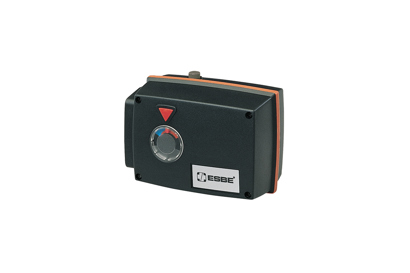3-Way and 4-Way Valves
VRG130 & VRG140
The ESBE VRG series of valves are designed for mixing and diverting water to the appropriate temperature to meet the zone or system requirements within heating and cooling systems.
The VRG valve replaces the MG and G series of valves and provides additional operational features. By either mixing or diverting, the fluid temperature leaving the valve is regulated by the VRG in either a manual operation or electronic when coupled with the ARA600 Series or 90 Series electronic motorized actuator.
Features and benefits
Excellent performance in valve regulation.
Lowest internal leakage of flow @ 14.5psi Δp:
- mixing <0.05%
- diverting <0.02%.
Compact valve design.
Suitable for closed loop heating or chilled systems, maximum 50% glycol.
VRG valve body material composed of dezincification resistant brass (DZR).
Products
The ESBE VRG Series 3-way & 4-way mixing valves includes a range of compact, low leakage valves. For easy manual operation the valves are equipped with non-slip knobs and end stops for an operational angle of 90°. The valve position scale can be turned over and rotated allowing many different mounting positions. Together with ARA600 and Series 90 actuators, the VRG valves are easily automated and have excellent regulating accuracy due to the unique valve to actuator interface.
Documents
| Type | Name | Language | Valid for | Updated | Download | File type |
|---|---|---|---|---|---|---|
| Case story | Engineering Tomorrow Builds Sustainable Heating System for PA Forest Bureau | English | United States | 21 Jan, 2019 | 1.5 MB | |
| Installation guide | ESBE 90 Series Actuator to VRG Valve Mounting Kit Instructions (193B1616)_VIKIU122 | English | United States | 06 Mar, 2014 | 9.7 MB | |
| Notification | ESBE MG & G to VRG Valve Cross-over | English | United States | 18 Mar, 2010 | 134.3 KB | |
| Data sheet | ESBE VRG Mixing and Diverting Valve Datasheet_VDKIK222 | English | United States | 04 Mar, 2016 | 1.2 MB | |
| Installation guide | ESBE VRG Mixing and Diverting Valve Instructions: 3-way_VIKIO122 | English | United States | 08 Mar, 2010 | 866.9 KB | |
| Installation guide | ESBE VRG Mixing and Diverting Valve Instructions: 4-way_VIKIP122 | English | United States | 08 Mar, 2010 | 792.3 KB | |
| Catalog | Hydronic Specialties Controls Catalog and Application Guide | English | Multiple | 25 Mar, 2022 | 2.4 MB |
Applications
Videos
Case studies
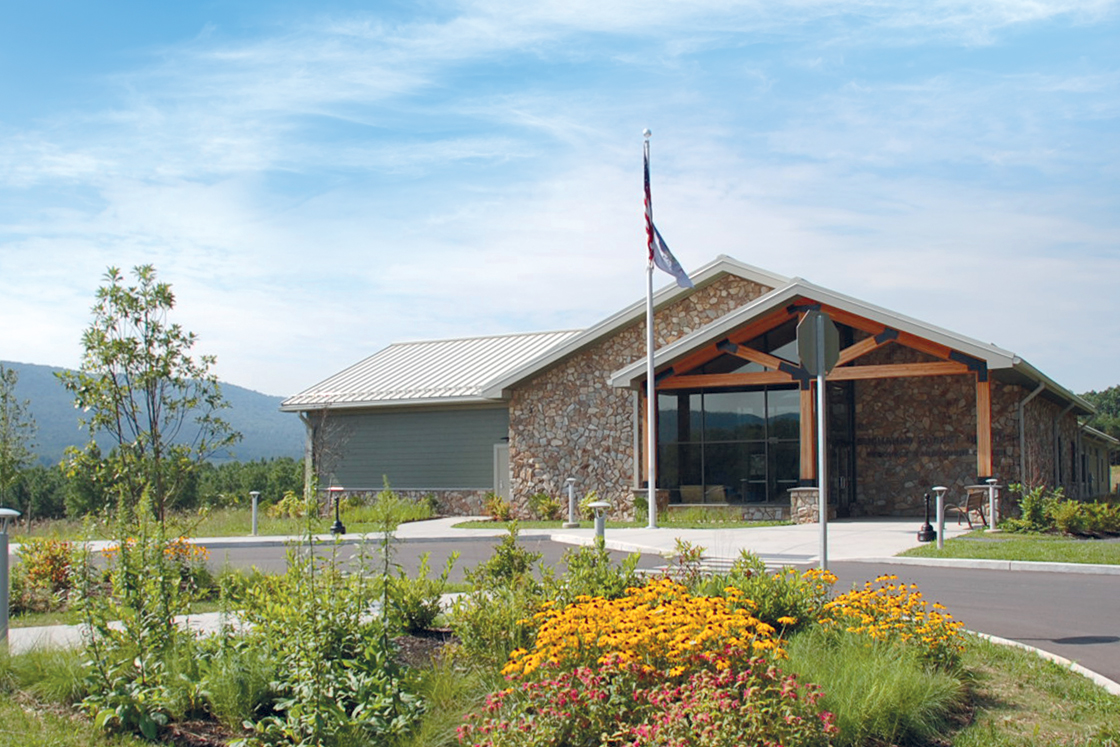
Engineering Tomorrow Builds Sustainable Heating System for Pennsylvania Forest Bureau
Department of Conservation and Natural Resources conscientiously chooses low-energy, high-comfort solutions to heat the new Resource Management Center in Pennsylvania’s Buchanan State Forest district.
Discover how Danfoss ESBE valves and actuators efficiently controlled the hydronic heating system.
Related products
-
if (isSmallPicture) {


 ESBE Type F Mixing Valves
ESBE Type F Mixing ValvesESBE Type F valves are flanged valves made of high-performing cast iron and available up to 6" in size and suitable for mixing or diverting applications in heating and cooling systems. Type F valves assemble to the 90 Series or ARC/ARD Series of motorized actuators.
-
if (isSmallPicture) {


 ESBE CRA Series Setpoint Controls
ESBE CRA Series Setpoint ControlsThe ESBE CRA Series of setpoint controls includes a combined motorized actuator and constant flow temperature control with an adjustable temperature setting.
The easy to use CRA series includes an LCD backlit digital display and is available in two varieties; the CRA112 - for use with ESBE valves up to 2", and the CRA122 - for use with all sizes of ESBE valves.
-
if (isSmallPicture) {


 ESBE ARC/ARD Series High Torque Actuators
ESBE ARC/ARD Series High Torque ActuatorsThe ESBE ARC/ ARD series of high torque rotary, low voltage, motorized actuators provide a 90°operating range of rotation. Suitable for assembly to ESBE Type F series, 3 and 4-way valves that range from 2” to 6” in size and alternatively applied as damper actuators.
-
if (isSmallPicture) {


 ESBE ARA Series Actuators
ESBE ARA Series ActuatorsESBE ARA 600 Series actuators are compact, motorized actuators for operating ESBE mixing valves up to 2". The 24V actuators replace the 60 Series, have improved mounting and operating functions and can easily be manually operated.
-
if (isSmallPicture) {


 ESBE 90 Series Actuators
ESBE 90 Series ActuatorsThe ESBE 90 Series of 24V electronic motorized actuators are direct mount to rotate ESBE 3 & 4-way rotary valves in hydronic heating and cooling applications. The 90 Series motorized actuator provides additional torque compared to the ARA series, and can be installed on all ESBE 3 & 4-way rotary valves, in sizes from ½” to 6”. 90 Series linkage kits are also available capable of adapting the motorized actuator to Viessmann, Honeywell, Centra DR/ZR, Landis & Staefa and TA VTR styles of valves.
Support
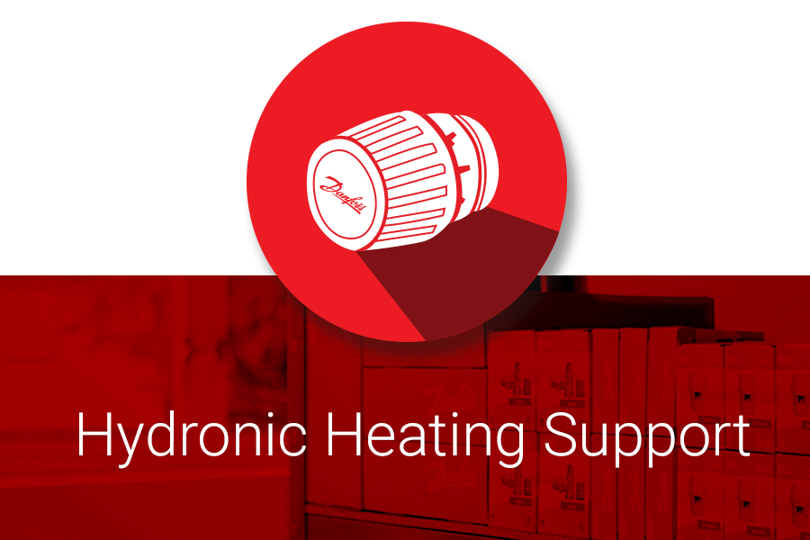
Technical Support
Find information on hydronic heating troubleshooting, including our top frequently asked questions, our video library, links to hydronic heating literature, a link to our newsletter, and more.

